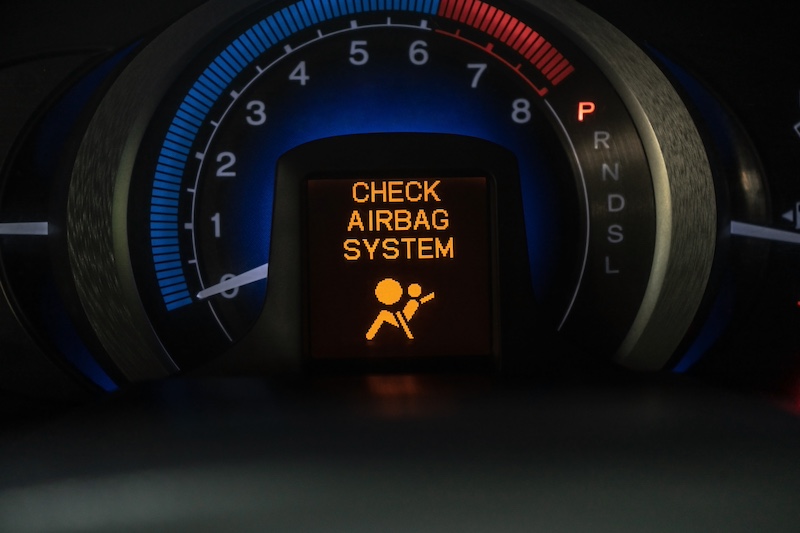
This enigmatic signal has the potential to disrupt your driving experience and compromise safety in various Volkswagen models, including the robust Atlas, Tiguan, Jetta, Taos, and ID.4 electric vehicles and among others. Explore the intricacies of this issue and uncover practical solutions to ensure your Volkswagen maintains its reputation as a symbol of safety and reliability on the road.
Understanding the Issue
The Airbag Malfunction Light also called the SRS light (Supplemental Restraint System), is a fundamental safety feature in your Volkswagen. When this indicator illuminates, it signifies a potential problem within the airbag system. Ignoring or neglecting this warning light can pose severe safety risks, as it may result in the airbags failing to deploy correctly during an accident, compromising occupant protection.
Steps to Fix the Airbag Malfunction Light
Before initiating any troubleshooting steps, it’s imperative to acknowledge the inherent risks associated with working on the airbag system. If you’re uncertain or uncomfortable with the procedures outlined below, you should seek professional assistance from a certified Volkswagen dealership.
Check for Obvious Issues
Begin the troubleshooting process by inspecting for straightforward issues that could trigger the Airbag Malfunction Light. These may include:
Loose Wires
Examine the area under the seats for any loose or disconnected wiring, as this could disrupt the proper functioning of the airbag system.
Obstructed Seat Belt Buckles
Objects or debris should not obstruct the seat belt buckles, as this can interfere with the system’s operation.
Addressing these simple issues may resolve the problem and extinguish the warning light.
Reset the Light
If no apparent issues are detected during the initial inspection, attempt to reset the Airbag Malfunction Light.
Follow these steps:
Turn off the engine and remove the key from the ignition.
Wait for a few minutes to allow the vehicle’s systems to reset.
Restart the car and observe whether the warning light remains illuminated.
If the light persists, proceed to the next step.
Utilize an OBD2 Scanner:
An OBD2 scanner is a valuable diagnostic tool to help identify the specific issue triggering the Airbag Malfunction Light.
Follow these steps to utilize the OBD2 scanner effectively:
Acquire an OBD2 scanner compatible with Volkswagen vehicles. These scanners are readily available for purchase at Volkswagen parts retailers or can be borrowed from local auto parts stores.
Connect the OBD2 scanner to the vehicle’s onboard diagnostic port, which is typically located beneath the dashboard or steering column.
Follow the scanner’s instructions to retrieve error codes associated with the airbag system.
These error codes will provide valuable insights into the underlying issue, guiding the subsequent troubleshooting steps.
Address the Issue:
Based on the error codes obtained from the OBD2 scanner, you may need to undertake specific repairs or component replacements to rectify the problem.
Common issues that may trigger the Airbag Malfunction Light include:
Faulty Airbag: If the error code indicates a problem with a specific airbag component, such as a sensor or inflator, it may be necessary to replace the affected part.
Malfunctioning Seat Belt: Issues with the seat belt pre-tensioners or buckle sensors can also trigger the warning light. Inspect these components for damage or malfunction and replace them as needed.
Clock Spring Failure: The clock spring maintains electrical connections between the steering wheel and the vehicle’s airbag system. If this component fails, it can trigger the malfunction of the airbag light and necessitate replacement.
Control Module Issues: Problems with the airbag control module, such as software glitches or hardware malfunctions, may also illuminate the warning light. Diagnostic testing may be required to pinpoint the exact cause of the issue.
Addressing the identified problem promptly and accurately is essential to restoring the proper functionality of the airbag system and ensuring occupant safety.
Visit a Professional:
If the Airbag Malfunction Light persists despite your best efforts to diagnose and address the issue, it’s advisable to seek professional assistance from a certified Volkswagen dealership. Trained technicians have the expertise, diagnostic tools, and access to genuine Volkswagen parts necessary to troubleshoot and repair complex airbag system issues effectively.
By entrusting your vehicle to professionals, you can rest assured that the problem will be resolved correctly, minimizing safety risks and ensuring peace of mind on the road.
Drive Confidently: Trust Volkswagen of Clarksville for Expert Airbag System Maintenance and Safety Assurance

The Airbag Malfunction Light in your Volkswagen is a crucial safety indicator that warns of potential issues within the airbag system. If this light comes on, it is essential to address the problem promptly. Some issues can be resolved through simple inspections and resets, while others may require more complex diagnostics and repairs. Regardless of the issue’s complexity, your safety should be your top priority, and seeking professional assistance is highly recommended.
At Volkswagen of Clarksville, we prioritize your safety, and our team of skilled technicians is ready to help keep your vehicle in perfect condition. Whether you drive an Atlas, Tiguan, Jetta, Taos, or ID.4 electric car, we are committed to providing reliable service and ensuring your peace of mind. Drive confidently and stay safe with Volkswagen.
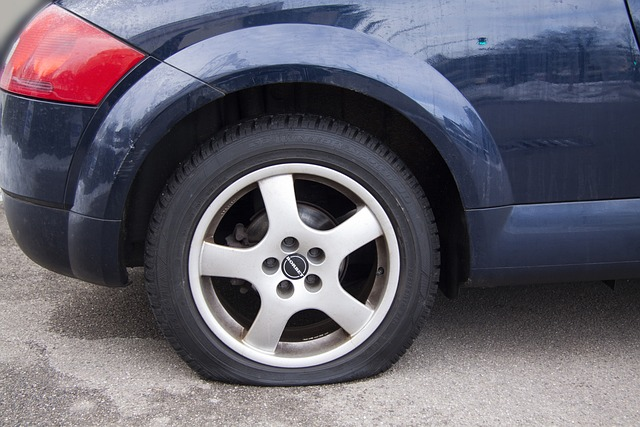
Have you ever been driving down the road and suddenly had one of your tires go flat? It’s an annoying inconvenience that can become a major problem if it happens often. But why do my tires keep going flat?
Knowing the most common reasons for tire deflation is key to preventing them from happening again in the future. In this article, we’ll take a look at the top ten reasons why your tires might be losing air pressure and how to avoid repeating these mistakes.
Click Here To Shop Tires In Clarksville!
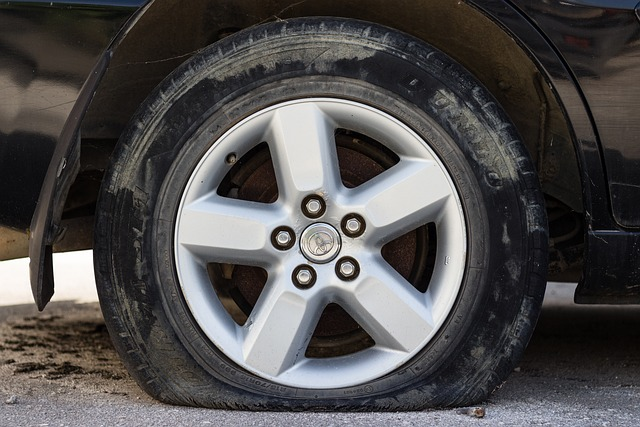
Tire Pressure Overview
Tire pressure is a crucial factor to consider when it comes to the overall performance and longevity of your vehicle’s tires. Tire Pressure Monitoring Systems (TPMS) are designed to inform drivers if their car’s tire pressure falls below the manufacturer’s recommended level, helping avoid potential safety issues caused by low tire pressure.
The ideal tire inflation will vary depending on the type of vehicle you have; typically between 30-35 PSI for cars and light trucks. Every valve stem has a maximum air pressure rating printed on its side which should not be exceeded.
Regularly checking and maintaining correct tire pressures is essential for safe operation and maximizing your car’s performance capabilities. With that said, understanding what causes low tire pressures can help ensure they remain within an acceptable range at all times.
Click here schedule auto service in Clarksville today!

Causes Of Low Tire Pressure
There are many reasons why your tires may be going flat. Most of these causes relate to improper tire pressure or a slow leak in the tire itself. Let’s explore some of the most common causes and what you can do about them:
Improperly sealed Tire Bead: The bead, which is located around the circumference of the wheel rim, should create an airtight seal with the tire when properly installed. If this seal isn’t tight enough, then it could cause air to escape from your tires slowly over time.
Damaged Valve Stems: Your valve stems are responsible for letting air into and out of your tires when needed.
Low Air Pressure: It’s important to check your car’s recommended tire pressure at least once per month (or more often if you drive frequently).
It’s also possible for low air pressure to be caused by something else entirely – such as a puncture in the sidewall or even incorrect alignment causing one side of the vehicle to carry more weight than usual.
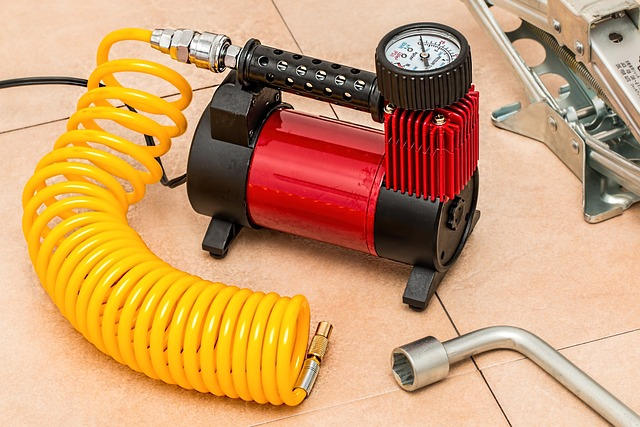
Improperly Inflated Tires
One of the main causes for flat tires is when tires are not properly inflated. Tire pressures should be checked regularly to ensure that they remain at optimal levels, otherwise you risk having a flat tire due to an overinflated tire or underinflated tire. Overinflated tires typically reduce your car’s fuel efficiency and can lead to uneven wear on the treads. This could result in a more hazardous ride as well as increased chances of getting a flat tire.
It’s important to always keep your tires properly inflated because it affects performance, safety, and even fuel economy of your vehicle. You should check your tire pressure every month with an accurate gauge and adjust accordingly based on manufacturer recommended settings.

Damaged Valve Stems
The improper inflation of tires is only one reason why your tires can lose air and may be going flat. Another common culprit for losing air in a tire is a damaged valve stem. The valve system on the side of your tire allows you to inflate or deflate it when needed, and if that’s not working correctly, then you’ll be losing air quickly. To check if this is the issue, grab some soapy water and put it around the valve stem area. If you see bubbles forming around them, then this could indicate an air leak from a defective valve stem.
If your tire pressure has been checked and all appears normal but you’re still having trouble with flat tires, take a closer look at the valve stems themselves. Make sure they are properly sealed and free of anycracks or damage that might be causing air leakage. You can also try replacing the valves altogether which should help resolve any issues related to air leakage caused by faulty components.
Defective Or Worn Tread
Flat tires can be caused by defective or worn tread. If the tire has lost air, it could be a sign of an issue with the rubber itself due to normal wear and tear. The cause may also come from a sharp object puncturing the tire, causing it to leak air and creating a flat spot on the surface.
Dry rot is another factor that can contribute to flat tires. This occurs when rubber becomes brittle over time or after prolonged exposure to sunlight, resulting in loss of traction or uneven pressure points within the tire.
Tire treads are designed to help protect your car’s wheels and provide better friction while driving – so if they’re badly worn down, it increases the risk of flats significantly.
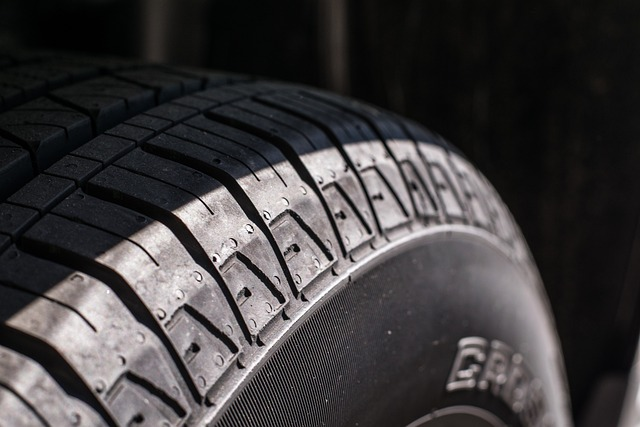
Wheels Out Of Balance
A common cause of flat tires is wheels being out of balance. If a wheel bends or gets out of alignment, it can lead to uneven tire wear and eventually result in a flat tire. Hitting potholes and unexpected debris on the road can also throw your wheels off-balance, so be sure to drive carefully when encountering these obstacles.
To prevent this from happening, make sure your car’s suspension system is properly maintained and check for any signs of bent wheels regularly. Also avoid driving over large bumps or through heavy traffic areas as much as possible. Taking these precautions will help keep your tires inflated and extend their lifespan significantly.
Tire Damage From Impact
Tire punctures and other forms of tire damage are common causes of flat tires. Punctures can be caused by sharp objects such as nails, screws, or glass that may be found on the road. Potholes, curbs, and other types of road hazards can also cause punctures in tires. Bad road conditions like broken pavement can lead to a blowout or sidewall cut.
Leaks from valve cores and stem seals are another frequent source of flat tires. The core is responsible for controlling the flow of air into the tire through its valves, while the seal helps keep any air leakage out. Over time these components can become damaged due to age or wear-and-tear leading to slow air leaks causing low pressures in your car’s tires.
Leaking Valve Core/Stem Seal
The previous section discussed the potential damage to a tire caused by impact. Now, we will discuss how leaks in the valve core or stem seal can cause tires to go flat. This type of leak is less common than other causes, but it does happen.
One sign that this may be the culprit for your flat tire is if you recently had your tire inflated properly and then it goes flat shortly after. Another sign could be if the air pressure changes with temperature; as temperatures drop, air pressure drops too, resulting in an under-inflated tire. If either of these scenarios are true, it’s likely there’s a problem with the valve core or stem seal allowing air to escape from within the tire itself.
Click here to shop auto parts in Clarksville.
Punctures And Holes In Tire Sidewall
Punctures and holes in tire sidewalls are a common cause of flat tires. These punctures or holes can be caused by road debris, such as nails, screws, and sharp rocks; they may also occur due to contact with other objects or uneven roads like curbs or potholes.
Road Debris (nails & screws)
Repair the hole using an approved patch kit or replace the tire if severe damage has occurred.
Contact w/ Other Objects (curbs & potholes)
Check your tire pressure regularly.
Inspect for any sign of damage after hitting a curb or pothole.
Consider getting wheel alignment services if you hit a large object at high speed.
These types of tire problems usually result in one tire going flat, so it’s important to check all four tires on your car periodically for signs of wear and tear. If you find any punctures or holes in the sidewall of your tire(s), take action immediately to repair them before further damage occurs.
Wheel Alignment Issues
Wheel alignment issues are one of the major reasons for having flat tires. When a car’s wheels are out of alignment, it can cause extra space between the tire and wheel rim which leads to air leakage and eventually causes your tires to go flat.
Here is a list of 3 factors related to wheel alignment problems:
Worn Suspension Components
Poor Tire Pressure Maintenance
Neglecting Regular Wheel Alignment Checks
If you notice signs of irregular wear on your tires or feel unusual vibrations when driving, then chances are there might be something wrong with the way they’re aligned. Temperature-related fluctuations in pressure can further compound these issues if not addressed promptly. It’s important to keep up with regular maintenance checks so that you don’t have any unexpected surprises down the road!
Temperature-Related Fluctuations
Temperature-related fluctuations can cause tires to go flat. During colder weather, the air inside a tire contracts, causing the pressure in the tire to drop and leading to a flat tire. This is an especially common problem during winter months when temperatures often dip below freezing. In addition, drastic temperature changes from day to night may also have an effect on tire pressure due to rapid expansion or contraction of the air within the tire.
Driving Habits And Driving Conditions
Most drivers don’t realize that driving habits and conditions can have a huge impact on the condition of their tires. The most common cause for tires going flat is underinflation, which occurs when air pressure in each tire drops below its recommended level. This can happen due to inclement weather or because of frequent long-distance drives. It’s important for drivers to keep an eye on their tires’ pressure levels in order to prevent them from going flat.
Tire Age And Storage
The average driver may not think about their tires going flat, but it is a common issue that can lead to costly repairs and replacements. As the age of the tire increases, so does the likelihood of them going completely flat. The same goes for improper storage conditions such as extreme temperatures or prolonged exposure to sunlight. These factors can cause severe cases of flats in even newer tires.
Preventative Maintenance Tips
It’s perfectly normal for tires to go flat occasionally. After all, they take a lot of wear and tear on the roads – not only from us but also other drivers. That’s a major reason why it’s important to keep up with preventative maintenance tips that can help prolong the life of your tires and reduce the chances of them going flat.
Firstly, check tire pressure regularly by using an air gauge or via the dashboard display (if your car has one). Unevenly inflated tires can wreak havoc on vehicle performance, fuel economy, and safety.
Secondly, ensure proper wheel alignment is always maintained; this helps tires last longer as well as ride smoother.
Lastly, inspect tires visually every month or so to make sure there are no cuts, bulges, cracks or other abnormalities in the treads. If any problems arise it’s best to get them looked at right away before they become an even bigger issue – otherwise you may end up having extremely difficult replacing them sooner than expected.
With these preventive measures taken care of, you’ll be able to identify potential issues quickly and easily when they occur.
How To Identify A Flat Tire And What Caused It
Identifying the problem of why your tires keep going flat can be difficult. One way to start is by inspecting your tire walls for any signs of damage or puncture wounds, as those are often an indication that something has gone wrong and it needs to be addressed.
In order to diagnose what may be causing flat tires, it’s important to remember these key steps:
Inspect both sides of each tire wall.
Measure your tire pressure periodically.
Check all parts related to inflation (e.g., valve stems).
Examine the treads carefully for abnormalities.
Conclusion
It’s important to remember that flat tires can be extremely dangerous and should always be taken seriously. Taking the time to inspect your vehicle and tires regularly, as well as understanding how best to store them when not in use is essential for keeping you safe on the road.
New Volkswagen SUV Model Line-up

2023 Volkswagen SUV models each offer the perfect combination of style, performance, and comfort. From the luxurious Touareg to the versatile Tiguan, there is something for everyone in Volkswagen’s lineup of SUVs. Whether you’re going for long road trips or just looking for a reliable SUV to drive around town in, every Volkswagen SUV model comes with all the features that make driving enjoyable. With advanced technology and top-notch safety features built into every Volkswagen SUV, you can drive confidently knowing your family is safe and secure.
Volkswagen SUV Models
2023 Volkswagen Taos

The 2023 Volkswagen Taos offers a spacious and comfortable interior, with plenty of legroom for passengers. It features an 8-inch touchscreen display with Apple CarPlay, Android Auto integration, and a built-in navigation system. Additionally, the Taos has heated front seats, automatic climate control, Bluetooth audio streaming, and hands-free phone capability.
The exterior of the 2023 Volkswagen Taos is modern yet timeless in design. It features bold lines that give it a sporty look while maintaining its classic shape. The Volkswagen Taos also offers 17” alloy wheels adding to its sharp styling while providing superior grip on any road surface. The Volkswagen Taos comes standard with LED headlights and taillights for increased visibility at night.
Under the hood of the 2023 Volkswagen Taos lies a 1.5L turbocharged engine that produces 148 horsepower and 184 lb.-ft of torque. Affording you plenty of power when needed while delivering excellent fuel economy thanks to its efficient direct injection system, which minimizes emissions. Additionally, the Volkswagen Taos comes in either an 8-speed automatic or 7-speed manual transmission, depending on your preference.
The technology offered in the 2023 Volkswagen Taos makes driving safer than ever. With features such as Blind Spot Monitoring, Forward Collision Warning, Lane Departure Warning, Adaptive Cruise Control, Automatic Emergency Braking, Parking Assist System, Backup Camera, and Rear Cross Traffic Alerts. These safety features put the Volkswagen Taos ahead of its competition and ensure you get the best SUV model for you and your family.
2023 Volkswagen ID.4

The 2023 Volkswagen ID.4 has a spacious and modern interior with plenty of room for passengers. It features a 10-inch touchscreen infotainment system, an 8-speaker audio system, dual-zone climate control, ambient lighting, and heated front seats. It also comes with advanced driver assistance systems such as adaptive cruise control and lane keep assist , making every drive safe and comfortable.
The exterior of the 2023 Volkswagen ID.4 is sleek and aerodynamic in design, with clean lines that give it a sophisticated look. It includes LED headlights and taillights, integrated roof rails for storage flexibility options, 18” alloy wheels for improved handling performance, power-adjustable side mirrors for enhanced visibility on the roadways, rain-sensing wipers for convenience in inclement weather conditions plus auto-dimming rearview mirror making night driving safer.
The engine powering the 2023 Volkswagen ID.4 is an electric motor that provides up to 201 horsepower at its peak power output along with 228 pound-feet of torque available from zero RPMs allowing drivers to accelerate quickly off the line or when passing other vehicles on the highway while maintaining excellent fuel efficiency ratings due to regenerative braking technology which captures energy usually lost during deceleration periods, and converting it back into usable electricity stored within its battery pack, giving you more range per charge cycle than ever before!
The technology packed inside the 2023 Volkswagen ID.4 won’t just improve your driving experience but also provides greater safety assurance thanks to their advanced suite of active safety features such as blind spot monitoring (BSM), pedestrian detection assist (PDA), rear cross-traffic alert (RCTA) plus automatic emergency braking (AEB). All this combined with wireless Apple CarPlay/Android Auto integration allows you to stay connected no matter where life takes you while also having access to real-time navigation information.
2023 Volkswagen Tiguan

The 2023 Volkswagen Tiguan offers a spacious and comfortable interior, with seating for up to seven passengers. It features heated front seats and second-row captain’s chairs that can be easily folded down to provide extra cargo space. A panoramic sunroof lets natural light inside the cabin, while an advanced infotainment system keeps occupants connected no matter where the road takes you.
The exterior of the 2023 Volkswagen Tiguan is designed with bold lines and striking details that give it a contemporary look. It boasts an aggressive grille, sleek headlights, taillights, and available 19-inch alloy wheels for added style. With its muscular stance, this SUV stands out from the crowd wherever it goes.
The 2023 Volkswagen Tiguan is propelled by a turbocharged 2.0L engine that produces 184 horsepower and 221 lb.-ft of torque, helping you get around town or hit the open road. An 8-speed automatic transmission delivers smooth shifting performance while offering up to 25 mpg combined fuel economy ratings depending on model choice. Additionally, all-wheel drive is available on select models giving you more control in inclement weather conditions or offroad excursions.
Technology abounds inside the new VW Tiguan thanks to its premium infotainment systems. These include Apple CarPlay/Android Auto compatibility for easy smartphone integration, and wireless charging capabilities. Standard safety features like forward collision warning assist, lane keep assist & blind spot monitoring help make driving safer than ever before. That is not all the Volkswagen Tiguan has to offer. This model comes with optional driver assistance technologies such as adaptive cruise control & automatic emergency braking.
2023 Volkswagen Atlas Cross Sport

The 2023 Volkswagen Atlas Cross Sport features a modern interior with premium materials throughout the cabin. The seats are spacious and comfortable, providing ample legroom for all passengers. Advanced technology is available such as an 8-inch touchscreen infotainment system with Apple CarPlay and Android Auto integration, as well as a digital instrument cluster display. The Volkswagen Atlas Cross Sport also comes standard with heated front seats, dual-zone climate control, ambient lighting, a power-adjustable drivers seat, and three USB ports.
The 2023 Volkswagen Atlas Cross Sport has a modern exterior defined by sleek lines that create a bold look from every angle. The Atlas Cross sport features LED headlights, taillights, and 19-inch alloy wheels to give it an athletic stance on the road. Several optional packages can add additional styling elements like roof rails or chrome accents for added flare.
Underneath the hood, the 2023 Volkswagen Atlas Cross Sport hides a turbocharged 2 liter 4 cylinder engine producing 235 horsepower and 258 lb-ft of torque mated to an eight-speed automatic transmission that sends power to either front or all four wheels depending on what trim level you choose. It has boasts fuel economy ratings estimated at 21 MPG in city driving conditions and should get around 27 MPG while highway driving. This SUV is efficient without sacrificing performance capabilities making it an excellent ride for most off-roading trips or hauling heavy loads up steep hillsides.
In terms of technology, the Volkswagen Atlas Cross Sport offers advanced safety systems and convenience amenities. These systems include adaptive cruise control, blind spot monitoring, rear cross-traffic alert, automated emergency braking, lane keep assist, and parking sensors. There are also tons of creature comfort technologies like wireless charging, Bluetooth connectivity, keyless entry/start, navigation, satellite radio, 12 speakers audio system, panoramic sunroof, and hands-free liftgate.
2023 Volkswagen Atlas

The 2023 Volkswagen Atlas offers a comfortable and spacious interior with seating for up to seven passengers. It features premium materials such as leather upholstery, wood trim, heated front seats and ambient lighting. The second row is adjustable in length to maximize cargo space or passenger comfort, while the third row is best suited for children or extra storage space. The Volkswagen Atlas also comes standard with 8-inch infotainment system, Apple CarPlay/Android Auto compatibility, a wireless charging pad, dual-zone climate control, a panoramic sunroof, a power liftgate, and a rearview camera.
The exterior of the 2023 Volkswagen Atlas features sleek lines complemented by robust wheel arches and bold headlights. Standard exterior features include 18-inch alloy wheels, LED taillights, fog lights, and heated side mirrors with integrated turn signals. Optional equipment includes larger 19- or 20-inch alloy wheels and chrome accents on the grille surround and window moldings.
The 2023 Volkswagen Atlas houses a 2.0L turbocharged four-cylinder engine that produces 235 horsepower and 258 lb.-ft of torque mated to an eight-speed automatic transmission which sends power to either the front two or all four wheels depending on model choice. The 2023 Volkswagen atlas can accelerate from 0 – 60 mph in just 7 seconds while providing excellent fuel economy numbers when paired with its stop/start technology (21 MPG city / 28 MPG highway). For those looking for more performance, there is also a 3rd generation V6 available producing 276 horsepower mated exclusively to 4MOTION all-wheel drive systems giving it improved acceleration times and additional off-road capability thanks to its selectable terrain modes (Snow / Off Road / Hill Descent Control).
The Volkswagen Atlas comes with tons of technology! The Volkswagen Atlas also comes with optional add-ons that can make your driving experience even better, including: adaptive cruise control, traffic jam assist, parking assist, lane departure warning, blind spot monitoring, driver drowsiness detection, and forward collision warnings.
Hello world!
Welcome to WordPress. This is your first post. Edit or delete it, then start writing!




